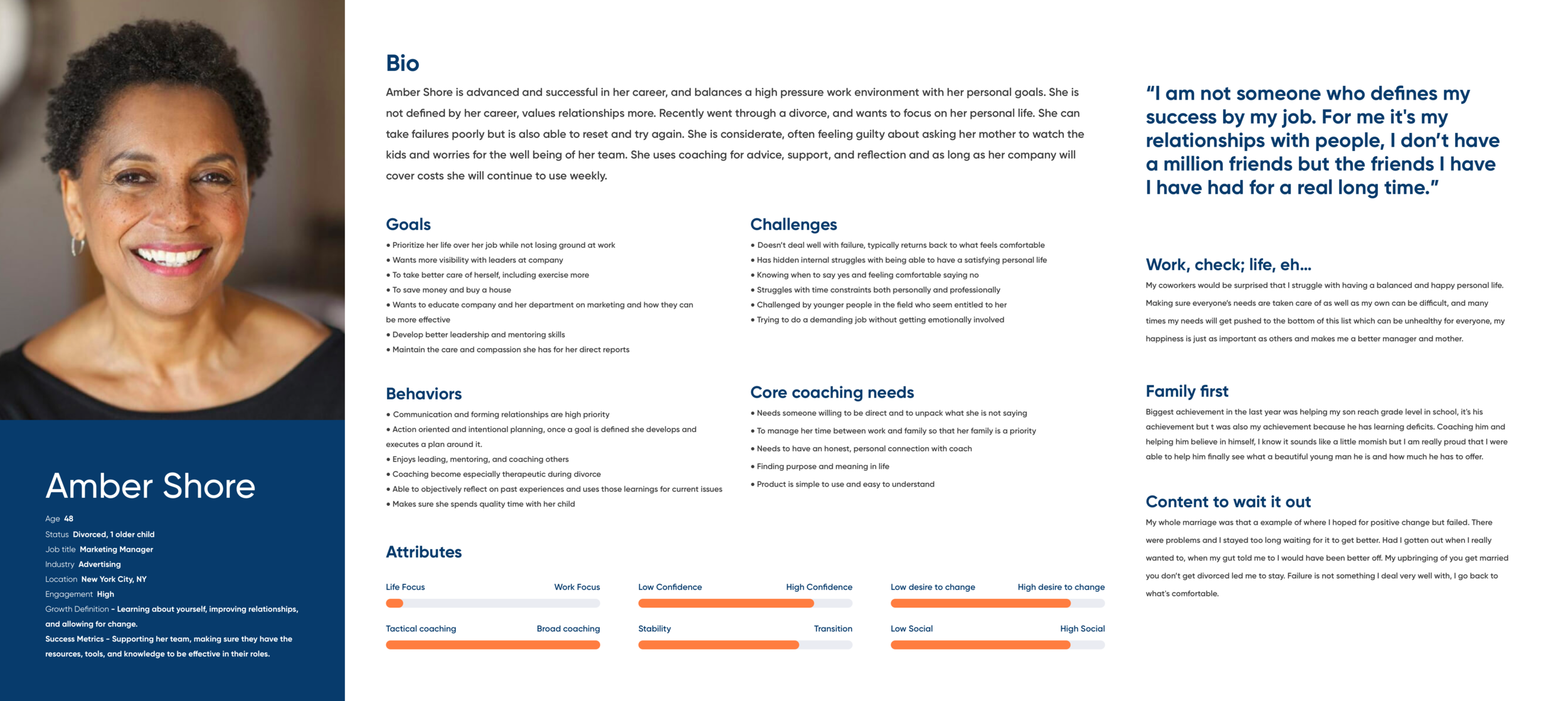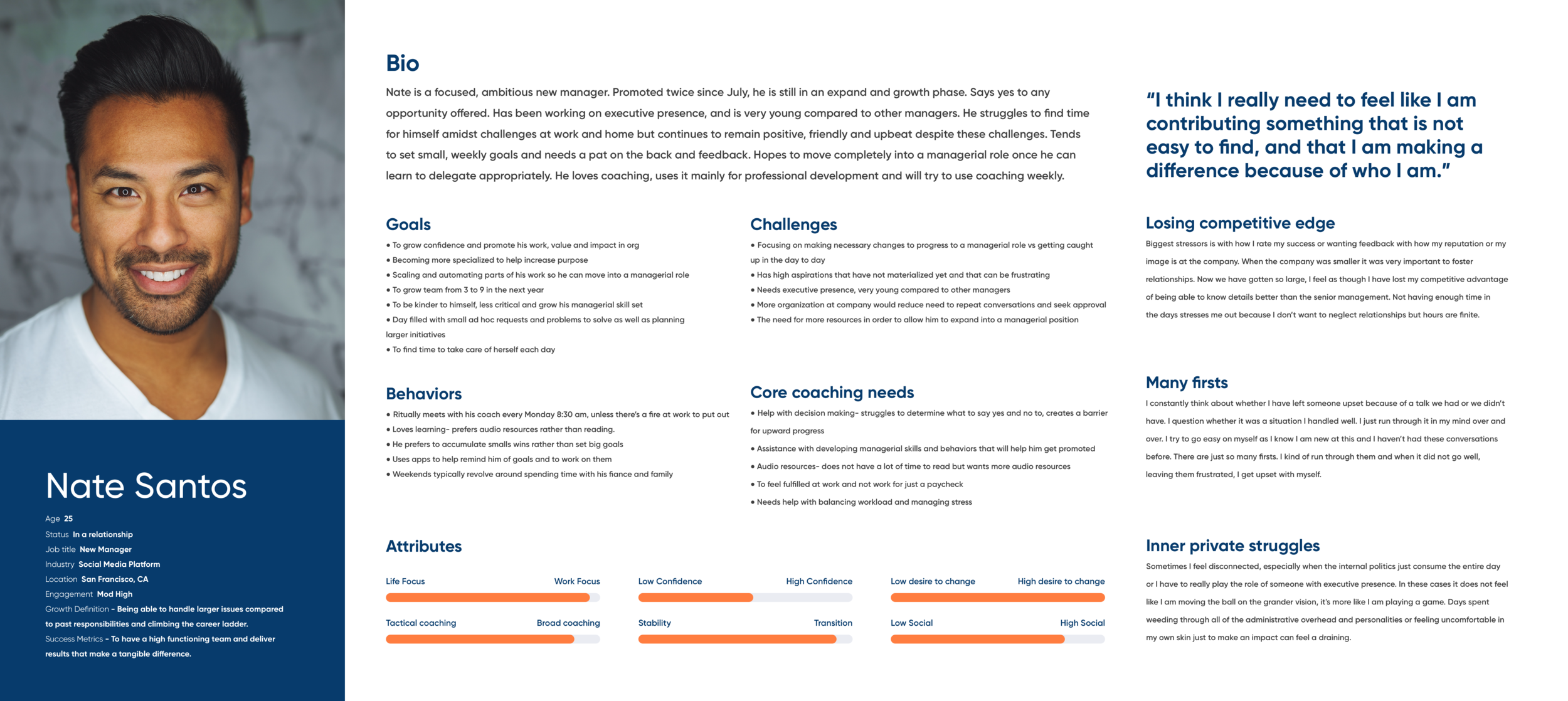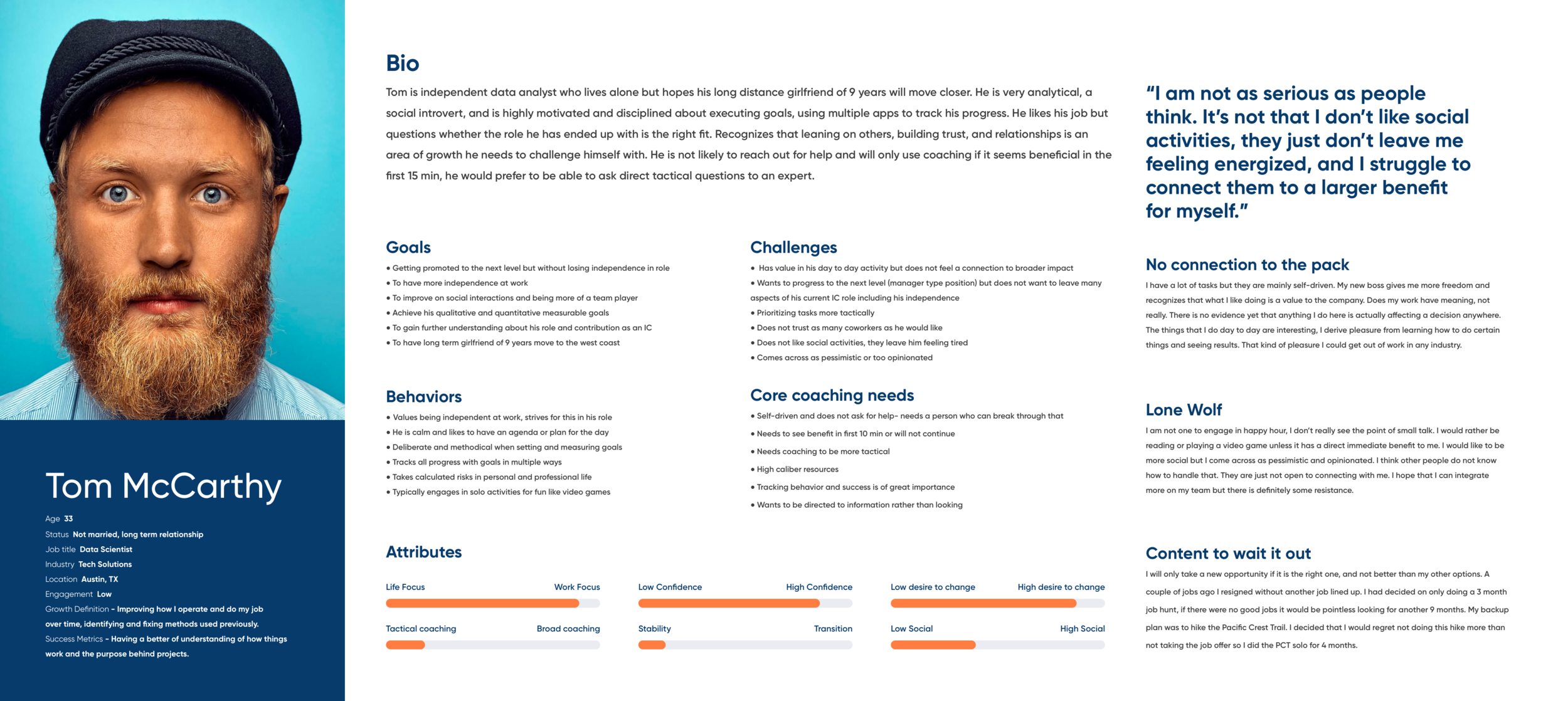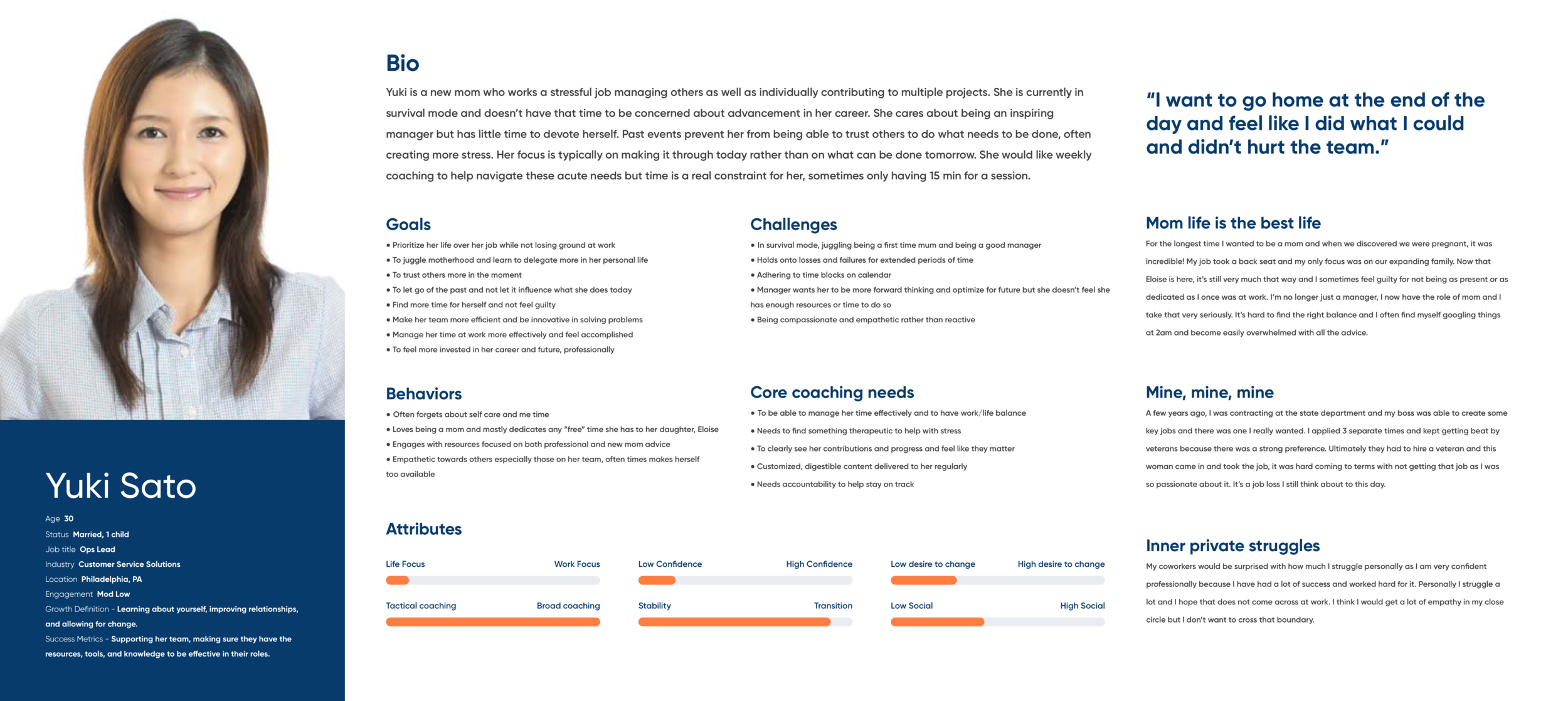A Journey in Developing Personas
The Opportunity:
At BetterUp, the mission is to help members live their lives with greater clarity, purpose and passion. In order to fulfill that intention, we needed to know our members on a deeper personal level. Ultimately we had to ask ourselves a tough question, how can we expect members to walk the walk in their journey of coaching with us if we don’t fully know what it’s like to be in their shoes?
With an innovative, qualitative approach, we embarked on a journey of member discovery in order to understand our members in a way in which we hadn’t previously. We began the project with an end game in mind, building distinct personas to help the product team validate innovations, ideas and our product, what we didn’t bargain for was the sheer amount of insight we would garner.
My Role
Led first company persona research as a Senior Product Designer
Team
Adrianna Gonzalez and Kathryn Saulsgiver (People Scientist)
Back to basics, what is a persona?
“A persona is a way to model, summarize and communicate research about people who have been observed or researched in some way. A persona is depicted as a specific person but is not a real individual; rather, it is synthesized from observations of many people.”
Continuing to build upon our practice of human centered design, personas are an extension of this practice and a way in which we are able to create reliable and realistic representations of key member archetypes. Personas are not real people, they are a composite of synthesized qualitative data and observations of many people.
Personas allow us to:
Build Empathy
Personas are compelling, they provide a human face for abstract data about our members. They can help us recognize that different members have different needs and expectations and allow us to identify with our members on a more personal level.
Focus
Through personas, we can gain a deeper understanding of our members and potentially infer what a real member might need or how they would interact with our product, potential solutions and ideas.
Form Consensus
Helps teams engage in a shared understanding of our real members in terms of their goals, behaviors, challenges and core needs.
Validate Hypothesis
Use scenarios to place personas in context and see how they would interact with a proposed idea/solution.
What personas are not:
Permanent
Personas aren’t tattoos, a persona is more like a temporary state than a fixed trait. A user may or may not evolve and transition over time due to new experience, life circumstances, development and coaching.
A Hierarchy
We did not create these in any form of hierarchy meaning one persona is not better than another. Personas were designed in order to highlight the strengths and needs of each persona type so that we can best serve these users.
Pre-work makes the dream work
Strategic preparation and execution
Identification & Categorization
We determined the best metric we could leverage in order to identify and categorize our users was platform engagement. We performed a quantitative data analysis and uncovered unique trends across different engagement levels and ultimately categorized them from low to high engagement. This categorization served as the foundation of who we would target for the ethnographic study.
Sample population: 800 members
Demographic: Users who had created an account between a 4 month period
Gender: 50/50
Ethnicity: Mix
Thematic Questions
The purpose of our research was to identify trends or patterns in user behaviors, expectations and motivations to form the basis of our user personas. In order to do this, we needed to identify what knowledge gaps we were experiencing and what information would be relevant in relation to building our personas as well as informing our interview script for the ethnographic study. Topics we wanted to target were as follows:
Motivation (motivation, examples of success and failure)
Support systems (type, strength, needs)
High growth periods (goals, reflection, challenges)
Growth potential (potential for change, barriers)
Common challenges (personal and professional)
Preferences (coaching style, technology comfort, etc)
Channeling Our Inner Conan O’Brien
Our interview process became primarily about how to master the art of conversation. With over half a dozen topics to cover in just 90 minutes, we had to be strategic and thoughtful in our interview script development and interview protocols. We asked ourselves how could these 90 minutes feel like a mutually beneficial use of time and how could we ensure we were connecting with our users. Using the analogy of a talk show host, we treated each interview as a conversation and recruited 16 '“guests” and up to 2 “audience members” for each call.
All conversations were conducted remotely and recorded through zoom
Conducted 16 user interviews resulting in 24hrs worth of footage
Debrief calls conducted following every interview
Post Interview
Remote cross country collaboration at it’s finest
Step 1: Synthesize
With all of our interviews complete, we were left with 24hrs worth of footage and post interview materials including observer worksheets to sift through. We ultimately distilled each interview down to 3 pages, categorizing responses to align with our thematic topics as well as noting familiar patterns or trends. The end result of this in depth qualitative synthesis was a comprehensive 48 page document that served as a source of truth of sorts.
Step 2: Themes & Matrix Attribute Pairing
The next step was to study the themes we had uncovered and experiment by pairing two different sets of attributes to create a 2x2 matrix and then map each interviewee into the quadrant they belonged to. After a number of experiments with adjusting attribute pairings, the idea was to begin seeing the “usual suspects” in the same grouping. For example, “high desire for change” and “lack of desire for change” compared to “low confidence” and “high confidence as the extremes. After a dozen attribute pairings we finally found the one and that pretty much made our day.
Step 3: Persona Creation
Now that we could distinctly identify 5 personas from the matrix exercise, it was time to bring our personas to life. As mentioned previously, a persona is not meant to represent a single entity, therefore we carefully put together each persona’s bio, goals, challenges, behaviors, core coaching needs and attributes from the interviewees that made up each grouping. To fully flesh out each persona, we borrowed stories (changing any identifiable details of course) and quotes from our conversations. Our ultimate goal was to create personas who were relatable and who we could build empathy for that were grounded by research. If you can understand how a persona may respond to an idea or proposed solution, you can arguably make more informed decisions in the short term to reach long term business goals.
Introducing our personas
Wrap up













